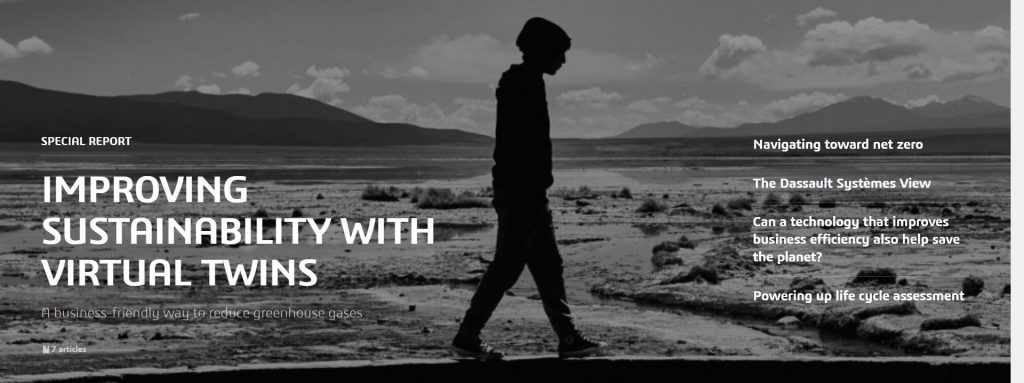In just a few months, leaders from around the globe will gather in Glasgow for COP26. From November 1-12, climate strategy experts will assess the progress being made toward sustainability objectives set by the Paris Agreement and look at new approaches to meeting the goals.
One topic on the agenda: how corporations are delivering on their environmental promises, and how they can accelerate their progress. One promising strategy to help businesses meet climate objectives is to apply virtual twins. In our newest special report – Improving Sustainability with Virtual Twins – Compass explores how the same technology that many companies already use to improve their products and processes can also help them achieve sustainability.
Virtual twins empower companies to understand, measure and reduce the environmental impact of their plans before they act – and to do so affordably. These powerful, sophisticated, science-based computer models and simulations allow organizations to imagine, design, test and manufacture radically new materials, products and services for tomorrow’s sustainable economy. They become even more powerful when combined with life cycle assessment tools.
The feature article in the special report, “Navigating toward net zero,” takes a deep look into how virtual twins help businesses forge a path to profitable, emissions-free operations. It shares how many companies want to make a positive impact but are struggling with how to meet ambitious goals; a BCG survey found that although 75% of business leaders say they view decarbonization as a top priority, only 13% have adopted actionable mitigation plans. It reveals some findings from a January 2021 paper, Designing Disruption: The Critical Role of Virtual Twins in Accelerating Sustainability, a collaboration between Accenture and Dassault Systèmes, including that use cases from five industries (construction, consumer packaged goods, transportation, life sciences, and electrical & electronics) found that using virtual twins can unlock more than 7.5Gt of CO2e emissions reductions through 2030 and US$1.3 trillion of economic value in those five industries alone.
The article cites several examples of companies in different industries that are applying virtual twin technology. One of these is Damen Shipyards Group, which – as seen below – uses virtual twins to capitalize on innovations that enable zero-waste operations to produce zero-emission ships.

The report also examines life cycle assessment (LCA) tools. The article “Powering up life cycle assessment” explores the benefits of adding impact-estimating capabilities to software that companies are already using across their product life cycle. Integrating LCA with virtual twin technology empowers companies to combine accurate data with simulation and predictive capabilities on a single platform, empowering employees to routinely assess the sustainability impacts of their design, supplier, manufacturing and logistics choices before they commit.
The infographic “Climate math” presents six key factors about the hidden costs in GHGs that are often absent in traditional business cost-benefit calculations such as impacts on stock valuation, employee retention and customer loyalty.
Three columns round out the special report:
- Alice Steenland, Dassault Systèmes’ chief sustainability officer, asks: “Can a technology that improves business efficiency also help save the planet”? She shares her viewpoints on the role technology will play in accelerating the sustainability transformation and her belief that virtual twins will play a central role.
- Raja Sengupta, Lead Engineer – Aerodynamics at Volvo Trucks North America shares how his company puts care for the environment at its core and is focusing on sustainable transport solutions. As the world is still moving to widespread adoption of electric and hydrogen-powered trucks, Volvo Trucks is simultaneously focusing on creating trucks with that emit fewer GHGs. To improve on the aerodynamic design of their baseline required extensive experimentation, and Sengupta shares the key role virtual twin technology played in that research and development.
- Jonathan Sykes of Carbon Intelligence explains why corporate action on measuring, managing and reducing carbon emissions has lagged to date – and why the business environment is now perfect for companies to make rapid progress.
READ THE SPECIAL REPORT: IMPROVING SUSTAINABILITY THROUGH VIRTUAL TWINS


